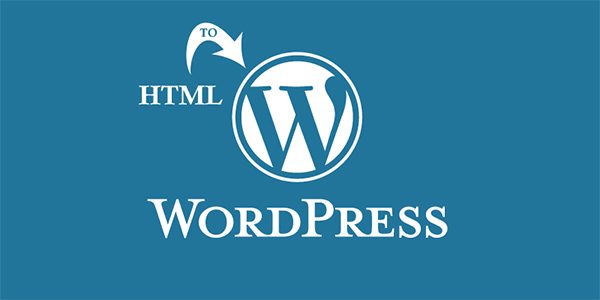Although WordPress makes it easier for non-coders to manage a website, there will probably come a time when you want to change the code in WordPress to have a little more control over how your site looks or works. Currently, it is estimated that a quarter of the 10 million most popular sites are based on the WordPress online publishing platform and there are around 100,000 new installations every day. WordPress indeed has a share of more than 50% on the CMS market, ahead of Drupal, Joomla or even Expression Engine.
There are still many static HTML websites, perhaps more than recommended, since until not many years ago it was the standard that developers offered you throughout the world. It is therefore not surprising that one of the flagship roles of the Web developer is to convert a static HTML site to the Wordpress platform. Scalable via thousands of plugins, the latter will offer greater flexibility, both for updating content and for managing different files.
Start your new web hosting
First of all, you will need to build a home for your new WordPress installation. Find a reputable web hosting provider that can provide you with a LAMP stack, which is made up of Linux, Apache, MySQL, and PHP or Python. Any combination of operating system, server program, database and scripting language that you can manage will do. Consider providers like BigRock or GoDaddy when you go shopping for a new hosting.
Make a backup of your old data
Once you have contracted a LAMP-based hosting plan, you will need to recover your old data from your current hosting environment. The best method to achieve this goal varies depending on how your old static HTML website was designed and the type of Server Side Includes functionality it had. A great way to compile your old data is with HTTrack Website Copier, which downloads your HTML files to your PC.
Migrate to the new database
First of all, you will need to install WordPress on your new host. Be sure to remember the administrator and database usernames and passwords. Migrating your old data can be done quite easily with simple plugins like HTML Import 2 or CMS2CMS. Whichever tool you choose, importing content into a new WordPress installation is a piece of cake. For static content, such as contact information, it is preferable to use pages rather than posts.
Recreate and update your old look
If your old website has been operational for a considerable period of time, chances are you’ve cultivated a certain look that current followers easily recognize. Start by looking for a free WordPress theme or ThemeForest theme that most closely resembles your old design. You can customize backgrounds and layouts in the backend theme editor. Alternatively, you can hire an HTML, Adobe XD or PSD to WordPress conversion service to make you a custom design.
Security and SEO through plugins
Last but not least, you’ll need to put your security and visibility issues in order. Install some basic plugins like All In One WP Security & Firewall. It would also be wise to use your .htaccess file as well as 301 redirects to ensure that the old links work with your new URL scheme. If in doubt, check the WordPress support forums for assistance.
Make WordPress work for you Once you’ve embraced the power and flexibility of a CMS like WordPress, you’ll realize how easy managing a dynamic website can be. The key to achieving the best result with WordPress is to regularly update the software core and any plugins you have installed. Although a WordPress website requires a little more work to maintain than a static HTML website, the results are well worth it.

